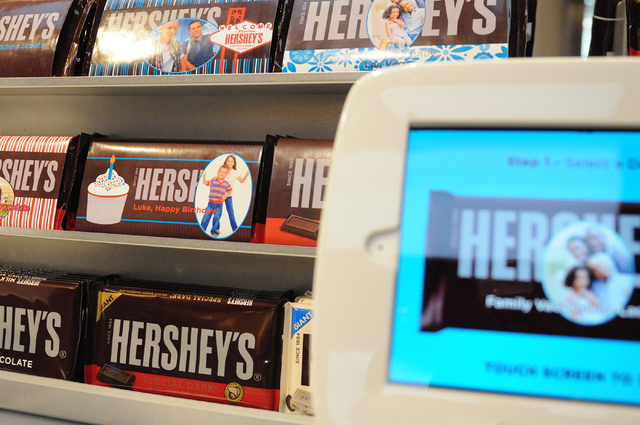Nutritionists say the darker, the better with chocolate
In the debate over whether chocolate is good or bad, some nutritionists are talking about the potential health benefits it might have.
“People don’t need to be scared of any food,” says Damon McCune, a registered dietitian and a coordinator at the UNLV Nutrition Center. “There isn’t one good or bad thing you should avoid. You just have to make sure you get your daily needs.”
Studying nutrition, he is always confronted with the mindset that chocolate is automatically bad.
But rest assured, McCune says, he loves chocolate.
“We find that chocolate gets a stigma,” he says. “People assume it’s bad because it’s candy.”
Chocolate is derived from the cacao bean, which is where the word cocoa comes from.
In its pure state, cacao is a rich source of antioxidants, McCune says.
“Antioxidants neutralize free radicals,” he explains. “Cacao has three times the amount of (antioxidants as) fruit and vegetables.”
Geri Lynn Grossan, a local dietitian, notes that dark chocolate has a substance called flavonoid.
“They are what protect plants,” she says. “They are the most abundant type of antioxidant.”
It is this substance that can be good for people.
“It stops the damage caused by free radicals,” she adds. “It is recommended 1 ounce (of dark chocolate) a couple of times a week.”
McCune says there have been some studies on chocolate as a whole. However, there are more studies available on antioxidants in general.
Higher levels of antioxidants in food have been linked to reducing the risks of dementia, cancer and heart disease, he adds.
In addition to being rich in flavonoids, dark chocolate can be a good source of fiber.
“That’s good for digestion,” McCune adds.
When it comes to picking a form of chocolate, the darker the chocolate the better. Milk chocolate is when it has been mixed with milk and sugar.
“Once you start processing it, you start neutralizing the amount of flavonoids it has,” Grossan says.
McCune adds people can rarely eat cacao in its original form because it is bitter.
Typically, it is diluted with sugar to make the taste more bearable.
When looking for chocolate, McCune and Grossan suggest looking at the percentage of cacao, which should be listed on most dark chocolate packages.
“I would say 70 percent or higher,” he says. “I have found bars at Trader Joe’s that are 85 percent and $2 to $3 for a bar, which is pretty cheap.”
Also, people can make it on their own to control the amount of sugar, McCune adds.
He says people can still indulge in milk chocolate from time to time.
“Milk chocolate has a lot of empty calories you have to watch out for,” he says. “(Overconsumption) could lead to obesity or many other problems.”
Like any food, he says, it’s all about moderation.
For those who suggest chocolate can be an addiction, the studies are lacking.
“If you look at general research, food can release neurotransmitters that increase things like dopamine,” he says, referring to the chemical that carries signals throughout the body.
“So in that sense, I guess it could be addictive.”
But he says there isn’t any conclusive data.
“Could you overdose on chocolate?” he asks. “Probably. But we’re talking pounds upon pounds. You’re not in immediate danger from having a hot fudge sundae.”
Contact reporter Michael Lyle at mlyle@reviewjournal.com or 702-387-5201. Find him on Twitter: @mjlyle.

















